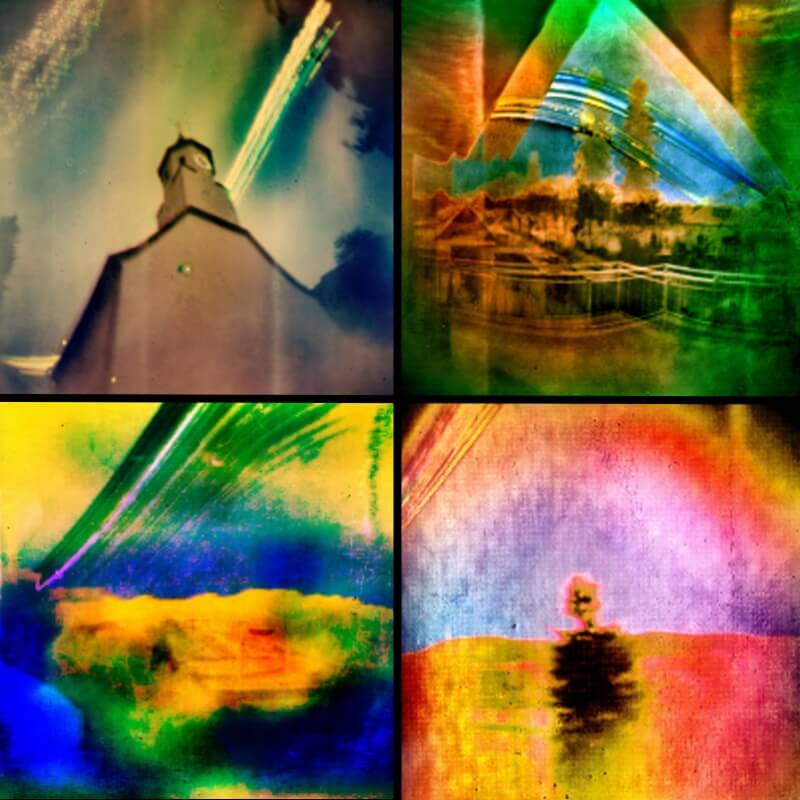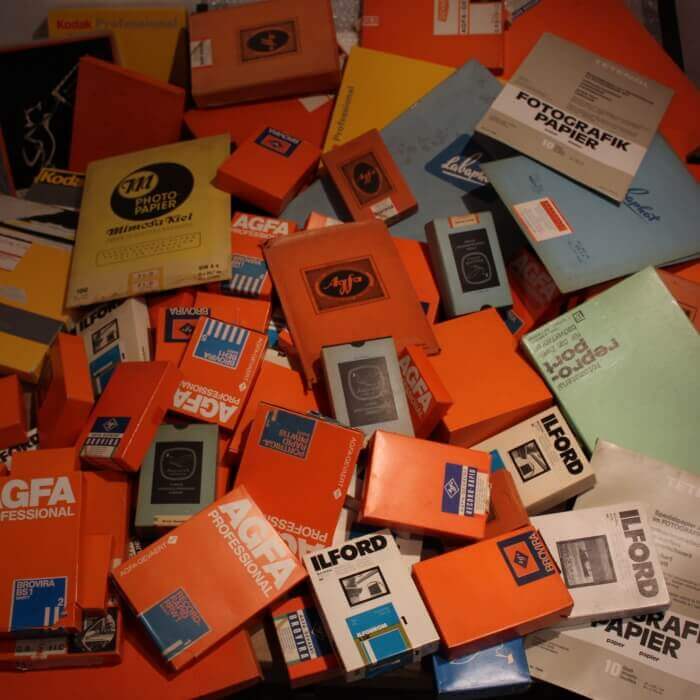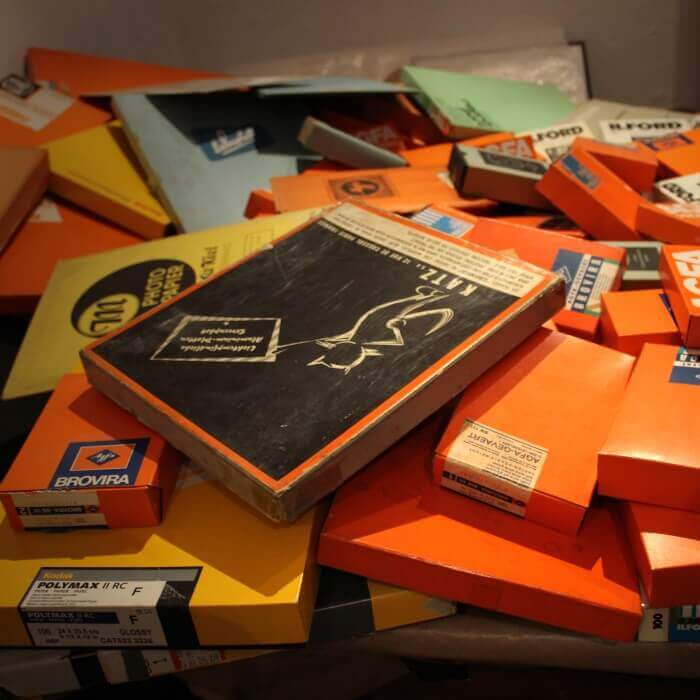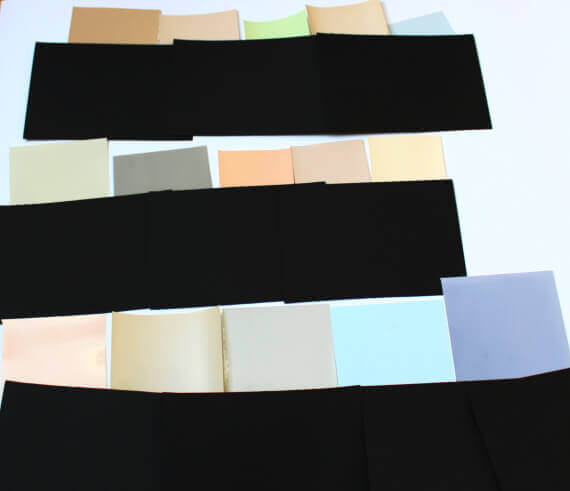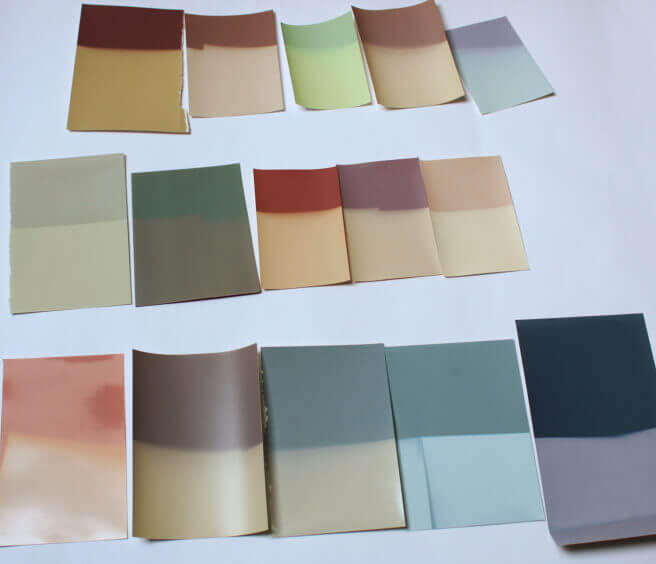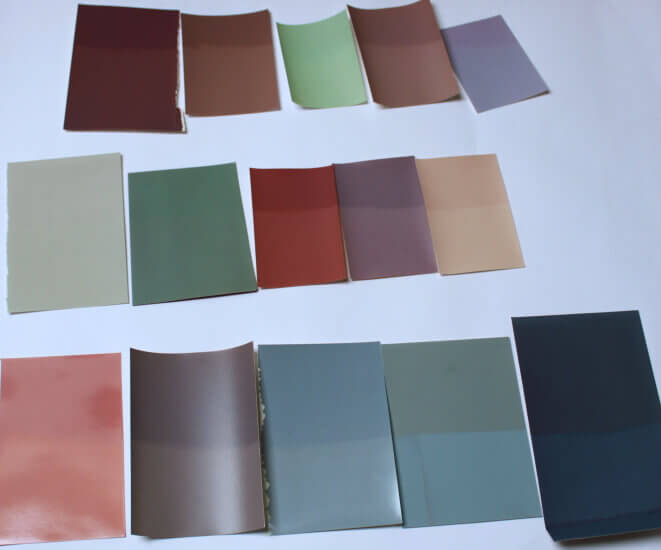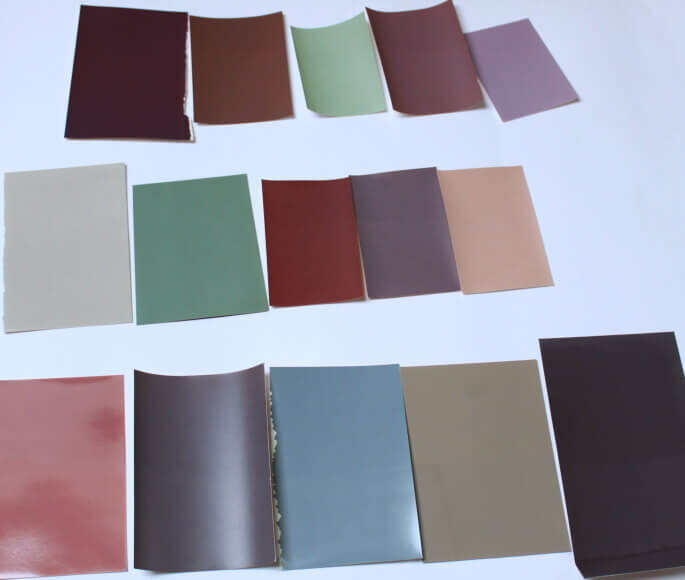No products in the basket.
Allgemein, The randomness decides
How black and white photo paper becomes colored
Many participants asked me how the different colours appear in the photographs?
An essential reason for the different colors of the pictures is the photo paper. Each photo paper has a different chemical structure and reacts differently to light. Hundreds of different photo papers are used for the pinhole cameras of the project. Some of them are over 50 years old.(see pictures below)
To illustrate the differences between the papers, I prepared an experiment.
Fifteen different photo papers were exposed to light. One half of the papers were covered with a black carton (photo 1). After an exposure time of two hours, the covers were removed (photo 2). In places that were exposed, the photo paper was now dark. In the course of two and a half hours, the previously unexposed side darkened slowly until each photo paper took on a uniform colour tone. (Picture 2-3) – The different color nuances can be seen in picture 4. .
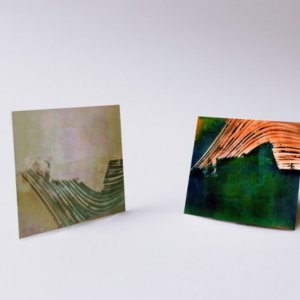
In this picture you can see a negative photo paper with an exposure time of one year. In areas where a lot of light has fallen the negative is darkened and appears in a dark blue (see solar tracks). In places where there was less light, the photo paper changed only slightly (see house). If the negative is now turned into a positive, you get the complementary colors. The house on the picture changes from purple and yellow to green and blue.
Images with a relatively short exposure time of 7 to 14 days tend to be monochrome. Images with longer exposure times often have a wide colour spectrum.
The final look of the image cannot be predicted in this project. Coincidence takes an elementary part in this art project.
I thank the I.G. Schwarz-Weiß Fotoclub Weil der Stadt e.V. for the provided photo papers.

